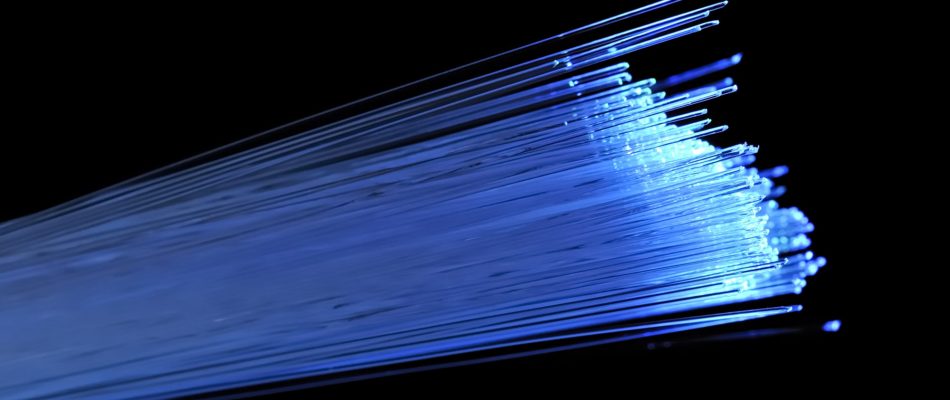Transmission of data is not wireless across the world. While wireless transmissions are common in homes and localized settings, major telecommunication services require cables to transmit large quantities of data accurately across long distances.
These cables need to be reliable and transmit data at high speeds to overcome lag or delays. Traditionally, copper-wired cabling has been used to transmit data. However, in recent years, fiber optics have replaced old copper wired cables.
Always remember to consult Communications Solutions Inc. in Jacksonville, Florida for the best fiber optics solutions.
Let’s discuss fiber optics and how it works to help you better understand their importance and prevalence in telecommunication services.
But first…
What Is Fiber Optics?
Fiber optics or optic fibers is the technology that uses thin, transparent optical fibers for the transmission of data, images, voice, etc. These flexible optical fibers are typically made of plastic or glass and use light pulses to transmit data over long distances.
The fibers are slightly thicker than human hair. When bundled up in a fiber-optic cable, they can transmit substantially more data over long distances much faster than other mediums.
However, all fiber-optic cables are not equal; some have only a few fiber optics, while others may have hundreds of fiber optics. Each fiber optic has a glass fiber core covered by a layer of pure silica known as its cladding.
The cladding is protected by another layer called the buffer tube, which is lastly covered by a jacket layer. Together, these layers make up an individual fiber, slightly thicker than a human hair. You can imagine how fine the fiber optic core is.
Where Is Fiber Optics Used?
Optical fibers and fiber optic cables can be used anywhere high-speed data transmission is required, especially over long distances. These cables are mostly for data transmission in telecommunication services, like the internet, telephones, computer networking, and television broadcasting.
Most commonly, fiber optic cables are synonymous with high-speed internet because they are better than standard copper cables in many ways. Most importantly, fiber optic cables provide higher speeds of transmission and more bandwidth to users. If it was not for fiber optic cables, you would not be able to receive higher gigabits per second (Gbps) internet speeds we are all so used to these days.
Learning about their efficiency raises the question, “how exactly do fiber optics work?”
How Fiber Optics Work
Fiber optics work in a unique way from other mediums of data transmission. While most wired cables, like copper cables, use electricity to transmit data, fiber optics use light to transmit data. The data is transmitted in the form of light particles or photons that pulse through the fiber-optic cable.
Its glass fiber core and the cladding that surrounds it, both have a different refractive index, which bends the light at certain angles. When data passes through a fiber-optic cable in the form of light signals, it reflects in the core and cladding.
This is much like how light reflects in real life from glass surfaces in a zigzag pattern, except in the cable, it has no place to escape, it can only travel through. This means that it experiences total internal reflection as it travels through the cable and no loss of light signals means no loss of data.
The light signals in fiber-optic cables travel around 30 percent slower than the actual speed of light, this is because of the dense glass layers it is traveling through. Everything moves slower as the medium of travel gets denser, the same is true for light.
Fiber optics signals can be boosted, or renewed through their journey if the distance they are traveling is long. This is done by using repeaters at intervals that convert the optical signals into electrical signals, process them, and reconvert and retransmit them as optical signals.
Types of Fiber-Optic Cables
There are two main types of fiber-optic cables.
1. Single-Mode Fiber
These have a smaller diameter of the core glass fiber, which decreases the possibility of reduced signal strength, making them great for longer distances. The glass core has a smaller opening which allows the light to travel in a more direct, single beam, hence enabling it to travel farther.
Typically, a laser is used as the light source for these fibers, and this makes it relatively more expensive. Producing laser light in smaller openings is difficult and requires precise calculations, all of which lead to more costs.
The costs are worth it though because single-mode fibers provide significantly higher bandwidths than multimode fibers.
2. Multimode Fiber
Multimode fibers have wider cores and core openings that allow for multiple light signals to travel along with the core at once. Hence, more data can be transmitted at once but not for long distances, making them ideal for short distances.
However, there is a higher chance of interference and signal loss. The benefit of multimode fibers is that they use LED light sources, cost less than single mode, and have lower bandwidths.
Conclusion
Traditionally, copper wire cabling is used to transmit data in cable connections, networking, and telecommunications. Fiber optics is changing that, and it has become the go-to alternative for these uses.
Due to their higher speeds at longer distances and ability to carry more information, fiber-optic cables have taken over major telecommunication services and continue to do so. Another major reason for this is the lack of electrical conductivity in fiber optics.
Unlike copper or other wired cables, fiber-optic cables do not conduct electricity, which means they are not prone to interference from electromagnetic activity, minimizing signal loss.
If you want to learn more about fiber optics and fiber optics solutions, please Contact Us today.



